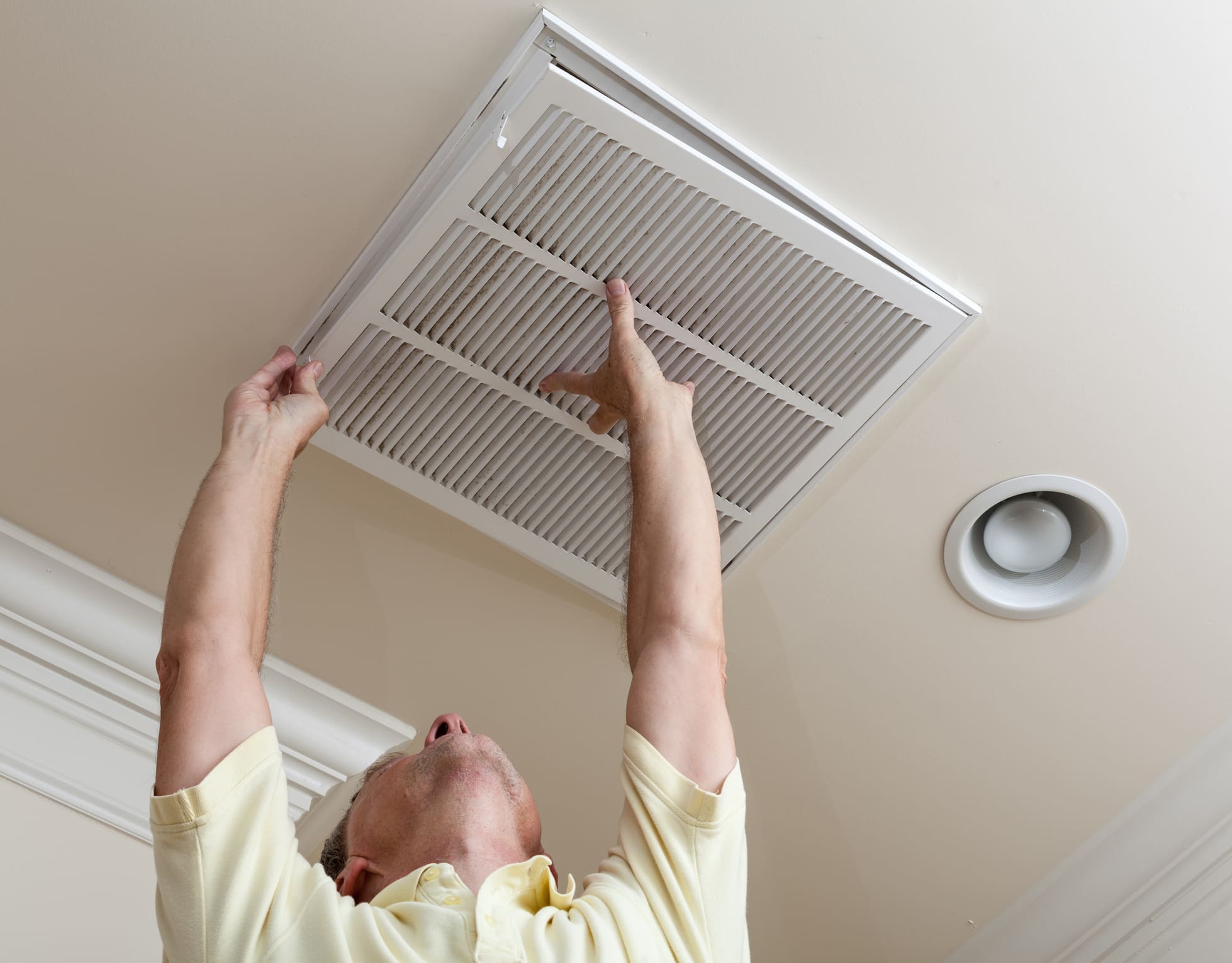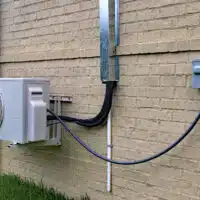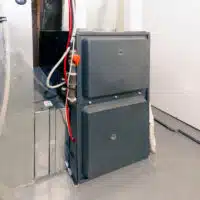How Altitude Affects HVAC Performance in Arizona

HVAC performance in Arizona’s varied landscape, especially in high-altitude areas like Sedona, faces serious challenges. Thinner air at higher elevations disrupts heat transfer, making HVAC systems work significantly harder and consume more energy. This strain can lead to reduced system efficiency and more frequent maintenance. Understanding these altitude-specific effects is vital for adapting HVAC systems to maintain reliable performance and comfort, even in demanding elevated conditions.
Fundamentals of Altitude and HVAC Operations
HVAC performance is greatly influenced by altitude, which directly impacts air pressure and density. In high-elevation areas like Sedona, thinner air presents unique challenges. Reduced air density means less efficient heat transfer, making it harder for HVAC systems to maintain consistent indoor temperatures. This can lead to increased energy consumption as the units work harder to achieve the desired effect.
Cooling systems often see a drop in capacity because lower-density air holds less heat, impairing overall system efficiency. Without adaptations like larger compressors or increased airflow adjustments, these systems struggle to perform effectively.
Additionally, heating systems at high altitudes face decreased combustion efficiency due to reduced oxygen levels. This affects the air-to-fuel ratio, which, if not adjusted, results in incomplete combustion, higher emissions, and less efficient energy use.
Understanding the relationship between altitude and HVAC performance is crucial. Properly tailored HVAC solutions that factor in these altitude-driven variables ensure optimal performance and energy savings.
By selecting systems designed for high-altitude conditions or modifying existing units with altitude correction factors, businesses, and homeowners can maintain comfort without sacrificing efficiency or reliability.
Impact on Cooling Systems
Thinner air at higher altitudes presents distinct challenges for HVAC performance. The reduced air density impacts both cooling efficiency and system effectiveness, which requires specific adaptations to maintain optimal operation.
Efficiency Challenges at High Altitudes
At elevated locations, the air’s reduced density compromises heat transfer, a core process for HVAC systems. This inefficiency forces air conditioners to work harder to achieve desired indoor temperatures, leading to prolonged operation times and increased energy consumption. As a result, maintaining comfort in such environments comes at a higher cost and stress to the system.
Compromised Heat Dissipation
One of the key issues affecting HVAC performance at high altitudes is reduced heat dissipation. With thinner air, the condenser struggles to release absorbed indoor heat effectively. This reduced capability strains the compressor, causing it to work harder and potentially reducing its lifespan. The system’s fans and other components may also become overburdened, risking more frequent breakdowns or higher maintenance demands.
System Adjustments for Optimal Performance
Addressing altitude-related inefficiencies often means system design modifications. For instance, larger or higher-capacity compressors can counterbalance the reduced air density, enabling more effective cooling. Additionally, HVAC units may require adjustments in refrigerant levels and recalibrated fan speeds to better adapt to thinner air. These changes help ensure consistent performance without excessive energy use or wear.
Maintenance of High-Altitude Systems
To prolong HVAC system life at higher altitudes, frequent inspections and preventive maintenance are crucial. Checking for compressor health, refrigerant levels, and fan functionality helps address potential issues before they escalate. With proper attention, HVAC systems can maintain efficiency and deliver reliable cooling, even in less favorable conditions.
Effects on Heating Systems
High-altitude environments present notable challenges to HVAC performance, particularly affecting heating systems. At elevated levels, reduced air pressure and oxygen availability impact combustion efficiency. Fuel-based systems, such as gas furnaces, depend on a precise air-to-fuel mix for optimal operation. In thinner air, these systems struggle to maintain complete combustion, leading to decreased energy output and increased emissions. This inefficiency highlights the need for specialized adaptations.
To counter these challenges, heating systems often require “derating,” where the system’s input capacity is adjusted to match altitude-specific conditions. Without this adaptation, systems can overconsume fuel while delivering inadequate heat, resulting in higher energy costs and accelerated wear. Proper derating ensures that HVAC performance remains balanced, aligning energy use with the system’s output needs.
Adaptations such as high-altitude kits can recalibrate the air-to-fuel ratio, optimizing combustion and maintaining efficiency. High-efficiency models like condensing furnaces are especially beneficial in these environments.
These units capture extra heat from exhaust gases, enhancing energy efficiency and minimizing waste. Implementing these solutions ensures reliable and effective heating even under altitude-induced pressure changes.
Long-term, proactive adjustments extend the lifespan of heating systems and support consistent HVAC performance. Tailoring systems for altitude help manage energy costs, reduce emissions, and deliver dependable comfort despite challenging conditions. For homeowners and businesses in high-altitude areas, these strategic modifications make a crucial difference.
Challenges in High-Altitude HVAC Performance
High-altitude environments pose notable challenges for HVAC performance, affecting both heating and cooling systems. The thinner air and reduced atmospheric pressure at higher elevations change how HVAC units operate, demanding careful adaptations.
For heating systems, these conditions disrupt the combustion process in fuel-based units like gas furnaces. Lower oxygen levels prevent complete combustion, leading to decreased energy output, higher emissions, and increased carbon monoxide risks. Ensuring the air-to-fuel ratio is optimized is critical for maintaining efficient energy use.
Impact on Combustion Efficiency
At altitude, heating systems often face reduced combustion efficiency due to lower oxygen availability. This affects the system’s ability to burn fuel completely, which can compromise energy output and increase emissions. Adapting the air-to-fuel mix is essential for sustaining proper HVAC performance.
Cooling System Challenges
Cooling units also suffer from the reduced density of high-altitude air. The lower air density impairs heat transfer, forcing air conditioners to work harder to cool indoor spaces. This increases energy consumption and accelerates system wear, emphasizing the need for altitude-specific adjustments. Without derating, performance dips and higher maintenance needs become more common.
Component Efficiency
The efficiency of HVAC components, such as fans and compressors, is impacted by thin air, reducing their ability to process air effectively. Recalibrating airflow settings or using larger compressors helps maintain system performance under high-altitude conditions.
Energy Consumption and Costs
The increased workload placed on HVAC systems at altitude leads to higher energy usage and elevated operational costs. Proactive solutions, such as recalibrating system settings and incorporating high-efficiency models, ensure that HVAC systems operate reliably and efficiently, even in challenging environments.
Addressing these challenges with targeted adaptations helps maintain optimal HVAC performance, extending equipment lifespan and supporting consistent indoor comfort.
Design and Equipment Considerations
Designing HVAC systems for effective high-altitude performance demands strategic considerations to counter the unique challenges of thinner air and lower pressure. These environmental changes directly impact how HVAC systems function, necessitating targeted adaptations to maintain efficiency, reliability, and optimal operation.
-
Derating and Capacity Adjustments
HVAC systems must be designed to align with the reduced air density at altitude. This prevents systems from overworking, which can lead to energy inefficiency and mechanical strain. Manufacturer-provided altitude correction factors guide these adjustments, ensuring that systems are calibrated for sustainable, effective operation.
-
Enhanced Compressors and Coils
Upgrading to larger compressors and oversized coils can offset the reduced heat transfer efficiency that thinner air imposes. These adaptations allow cooling systems to maintain stable performance, ensuring effective heat exchange even when air density is significantly lower. This step is vital for maintaining consistent HVAC performance.
-
Optimized Airflow Control
Proper airflow management is crucial for effective heating and cooling in high-altitude environments. Systems may need airflow increases or ductwork adjustments to ensure air circulates efficiently. Without this, HVAC performance can falter, impacting comfort and energy consumption.
-
High-Efficiency Equipment
Selecting high-efficiency units, such as condensing furnaces, is beneficial at altitude. These systems capture extra heat from exhaust gases, maximizing energy use and ensuring dependable operation despite reduced air pressure.
-
Altitude-Specific Calibration
Implementing high-altitude kits and recalibrating combustion settings helps heating systems maintain an optimal air-to-fuel ratio, essential for efficient and safe performance. These adjustments reduce fuel consumption and lower emissions while boosting reliability.
-
Leveraging Technical Support
Relying on updated manufacturer data, simulation tools, and performance charts ensures systems are properly adjusted for high-altitude use. This technical support aids in selecting suitable equipment and maintaining long-term efficiency.
Incorporating these considerations not only enhances HVAC performance but also extends the system lifespan and ensures consistent indoor comfort. Addressing altitude-specific challenges with proactive design choices and equipment adaptations helps systems thrive in even the most demanding environments.
Case Study: Sedona’s HVAC Requirements
Sedona, situated at an elevation of approximately 4,350 feet, presents distinct challenges for HVAC performance due to its higher altitude. The reduced air pressure and density at this level affect how heating and cooling systems function, requiring specific adaptations to maintain efficiency and reliability.
Reduced Efficiency in Heating Systems
The thinner air at Sedona’s elevation impacts combustion-based heating units, such as gas furnaces, which rely on a balanced air-to-fuel ratio for efficient operation. Lower oxygen levels can lead to incomplete combustion, resulting in decreased energy output, higher emissions, and potential carbon monoxide risks. Ensuring systems are calibrated for altitude is crucial to maintaining safe and efficient performance.
Cooling Challenges
Cooling systems in Sedona also face reduced performance due to the thinner air’s impact on heat transfer. Air conditioners must work harder and longer to achieve desired cooling, increasing energy consumption and wearing out components more quickly. Implementing derating measures and optimizing system components, such as using larger compressors and enhanced coils, helps maintain effective cooling in this environment.
Optimized Airflow and Ductwork
Proper airflow management is essential at higher altitudes. Adjusting ductwork and enhancing airflow settings ensure even distribution of conditioned air, preventing temperature imbalances and minimizing energy loss. These modifications are vital to sustaining indoor comfort in Sedona’s variable climate.
Efficient Equipment and Calibration
High-efficiency systems like condensing furnaces are ideal for managing Sedona’s altitude challenges. These units extract extra heat from exhaust gases, enhancing overall energy use. Using altitude-specific calibration kits also supports effective HVAC performance by adjusting combustion settings to balance the air-to-fuel mix.
Adapting HVAC systems to Sedona’s unique altitude requirements ensures reliable performance and prolonged equipment lifespan. These targeted strategies help homeowners and businesses maintain energy-efficient, comfortable indoor environments.
Maintenance and Long-Term Care for High-Altitude HVAC Systems
Maintaining HVAC performance at high altitudes involves targeted strategies to handle the unique challenges posed by thinner air and lower pressure. These environmental factors increase the strain on heating and cooling systems, making consistent maintenance essential to sustaining efficiency and extending the system’s life.
Routine Inspections and Cleaning
High-altitude conditions force HVAC systems to work harder, accelerating wear on key components. Regular inspections are necessary to catch early signs of wear or malfunction. Cleaning coils, filters, and ductwork maintains optimal airflow, a critical factor for maintaining energy efficiency and consistent performance.
Altitude-Adjusted Calibration
Ensuring that HVAC systems are calibrated for altitude-specific needs is crucial. This includes setting the proper air-to-fuel ratio for combustion-based heating systems to compensate for reduced oxygen levels. Proper calibration helps prevent incomplete combustion, which can lower energy efficiency and increase emissions.
Monitoring Component Durability
Compressors, fans, and other HVAC components can experience heightened stress in high-altitude environments. Regular checks and timely replacements of these parts can sustain system reliability. Using high-efficiency, altitude-adapted components further enhances durability and HVAC performance.
Energy Use Monitoring
High-altitude conditions often lead to higher energy consumption due to increased operational demands. Regularly monitoring energy usage helps identify spikes that may signal inefficiencies or potential issues. Adjusting system settings or upgrading equipment can mitigate these problems and optimize energy efficiency.
Seasonal Maintenance Preparation
Seasonal changes at high altitudes can be drastic. Preparing HVAC systems before significant temperature shifts ensures they function optimally during peak heating or cooling periods. This proactive approach minimizes unexpected failures and maintains indoor comfort.
Manufacturer Guidance and Support
Leveraging technical support and following manufacturer guidelines tailored for high-altitude conditions ensure that maintenance practices are aligned with system needs. Manufacturer resources and performance charts provide valuable insights into altitude-specific adjustments.
Implementing these maintenance practices ensures long-term HVAC performance, enhancing system lifespan and operational reliability while preserving energy efficiency in high-altitude environments.

Energy Efficiency Strategies
Ensuring energy efficiency in high-altitude HVAC performance involves strategic approaches tailored to the unique conditions of thinner air and reduced atmospheric pressure. Implementing targeted solutions not only improves system reliability but also enhances energy conservation and comfort.
Calibrating Systems for Altitude
Proper calibration is key to achieving optimal HVAC performance. Heating units, especially those using combustion, need their air-to-fuel ratios adjusted to prevent incomplete combustion, which wastes fuel and emits more pollutants. Altitude-specific calibrations ensure systems use energy efficiently and maintain reliable operation.
Investing in High-Efficiency Equipment
High-efficiency systems, like condensing furnaces and advanced air conditioners, are designed to operate well even with reduced air density. These units extract more heat from combustion gases or incorporate energy-saving technology, significantly boosting performance and reducing energy consumption at altitude.
Airflow Optimization
Effective airflow is critical for efficient heating and cooling. Enhancing airflow through upgraded ductwork and improved coil design compensates for the reduced pressure, ensuring even temperature distribution without overtaxing the system. This helps maintain efficient HVAC performance while minimizing energy use.
Regular Maintenance
Routine maintenance is essential for energy efficiency. Cleaning coils, replacing filters, and inspecting ducts prevent blockages that force HVAC systems to work harder and consume more energy. Proactive care keeps all components running smoothly, supporting long-term efficiency.
Smart Technology Integration
Using smart thermostats and zoning systems helps manage energy use more effectively. These technologies allow tailored temperature control, ensuring only occupied areas are heated or cooled, which reduces overall energy consumption and optimizes HVAC performance.
Energy Monitoring
Regularly tracking energy usage with smart monitoring tools provides insights into system efficiency and identifies potential issues. Addressing inefficiencies early can lead to cost savings and sustained energy performance.
By implementing these energy efficiency strategies, HVAC systems can better navigate the demands of high-altitude operations. These measures extend the life of HVAC units, reduce energy costs, and maintain comfort, ensuring reliable, efficient performance in challenging environments.
Ensure consistent and efficient HVAC performance at high altitudes with tailored solutions from One Hour Air Conditioning & Heating of Phoenix, AZ. Our expert team understands your unique needs and guarantees optimal comfort year-round. Contact us today for reliable, high-altitude HVAC care.

FAQ About HVAC Performance
-
How does altitude affect HVAC cooling and heating differently?
Altitude impacts HVAC performance uniquely in heating and cooling. Cooling systems face reduced efficiency due to thinner air, making it harder to transfer heat and requiring more energy. Heating systems, especially combustion-based units, struggle with reduced oxygen levels, leading to incomplete combustion, lower energy output, and higher emissions.
-
What are the signs that my HVAC system is struggling at high altitudes?
Indicators include prolonged operation cycles, uneven temperature distribution, higher energy bills, and frequent maintenance issues. These signs suggest the system is overworking and may need altitude-specific adjustments.
-
Can altitude affect humidity control in HVAC systems?
Yes, altitude influences humidity control. Reduced air pressure can make dehumidification less effective, resulting in drier indoor air. This impacts comfort and may create challenges in maintaining balanced humidity levels.
-
What HVAC equipment adjustments are necessary at higher elevations?
Key adjustments include derating system capacity, optimizing airflow, and calibrating air-to-fuel ratios for combustion systems. Installing larger compressors and using high-altitude kits help ensure efficient HVAC performance.
-
Is professional maintenance more crucial for high-altitude HVAC systems?
Yes, professional maintenance is vital at altitude. Regular inspections ensure systems remain calibrated for altitude conditions, prevent performance issues, and sustain energy efficiency.








